10 Best MediaTek Chipsets Used in Mobile Phones
MediaTek, a Taiwan-based technology firm, is a prominent player in the smartphone chipset industry. Known for developing more cost-effective chipsets compared to its competitors, MediaTek has made mobile devices more accessible due to lower production costs.
While MediaTek chipsets are generally more budget-friendly, they cater to various market segments, including the high-end, mid-range, and entry-level categories.
Initially, MediaTek was criticized for its poor heat management and underwhelming performance. However, significant improvements have been made in recent years.
They enhance the chipset's capabilities while maintaining affordability. Consequently, numerous mobile phone vendors continue to prefer MediaTek, with some even switching from other manufacturers.
A notable drawback is MediaTek's policy on source code confidentiality. Unlike other chipset producers, MediaTek keeps their source code closed and has no intentions of making it public.
This restricts the ability for MediaTek devices to receive timely Android updates, as these updates generally require access to the source code. Vendors wishing to update their devices must incur additional costs by paying MediaTek.
Despite these challenges, MediaTek remains competitive and consistently releases new chipsets that rival those of Qualcomm Snapdragon. This rivalry ultimately benefits consumers by driving innovation and keeping prices competitive.
Types of MediaTek Chipsets
MediaTek has numerous chipsets, which historically have been challenging to categorize due to their complex naming conventions. Fortunately, starting in 2023, MediaTek began streamlining its naming system to make it more user-friendly. Here's a detailed look at the different categories of MediaTek chipsets:
1. MediaTek Dimensity Series
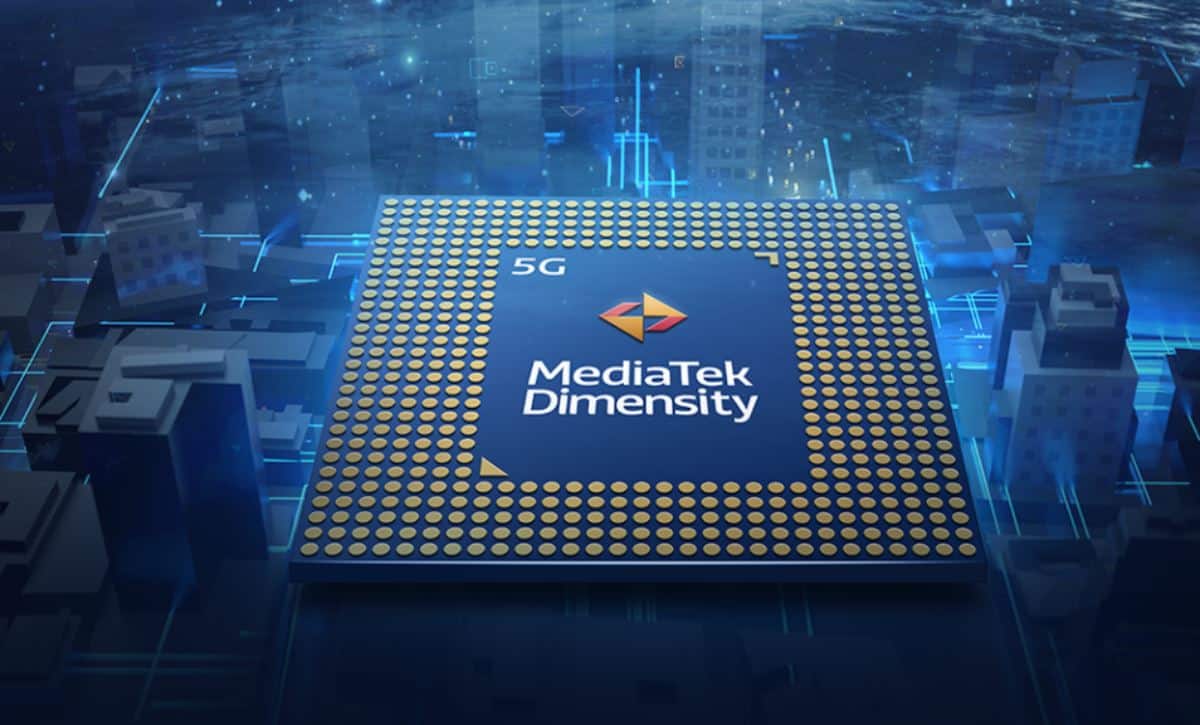
The MediaTek Dimensity series represents a strategic move by MediaTek into the 5G space, blending high performance with the latest network technology.
This series is designed to offer a combination of connectivity, multimedia enhancements, AI capabilities, and excellent image quality. The Dimensity lineup includes several sub-series:
- Dimensity 700 Series has evolved into the Dimensity 6000 Series, offering affordable 5G capabilities.
- Dimensity 800 Series has transitioned to the Dimensity 8000 Series, focusing on premium mid-range 5G performance.
- Dimensity 900 Series has been upgraded to the Dimensity 7000 Series, targeting the mid-range 5G market.
- The Dimensity 1000 Series has been replaced by the Dimensity 8000 Series, with the Dimensity 9000 Series emerging as the flagship offering.
The rebranding indicates MediaTek's commitment to further develop the Dimensity series, particularly as the development of the Helio series seems to have plateaued with the Helio G99 and its variants.
2. MediaTek Helio Series
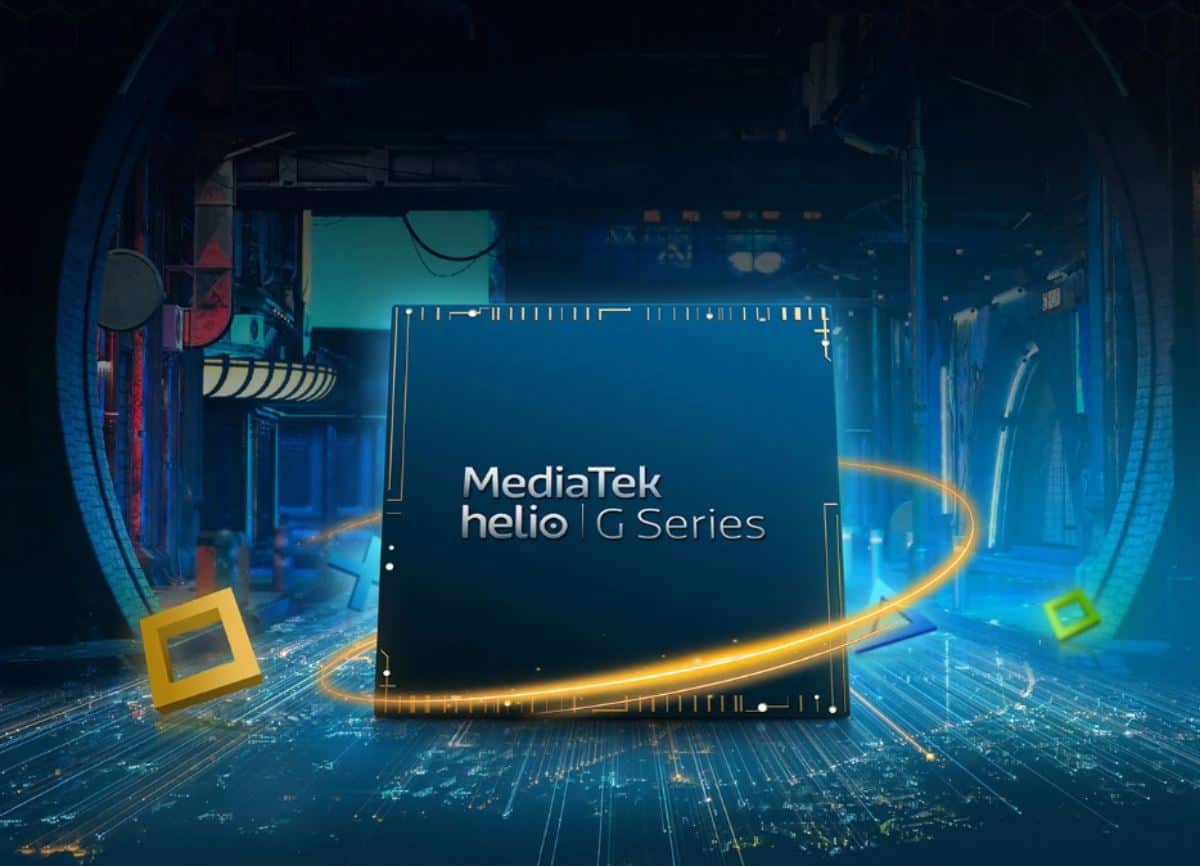
The MediaTek Helio Series is divided into four distinct factions, each with different market segmentations and development timelines. The series includes the Helio X Series (2014-2017), Helio A Series (2018-2020), Helio P Series (2015-2020), and Helio G Series (2019-2024), all of which are designed as 4G chipsets.
The Helio X Series is designed for high-end mobile phones since it provides top-tier performance. Meanwhile, the Helio A Series caters to entry-level phones, making it affordable for budget-conscious consumers.
The Helio P Series is tailored for mid-range phones that emphasize multimedia capabilities and power efficiency. On the other hand, the Helio G Series targets the growing mobile gaming market, demonstrating MediaTek's adaptation to the rising demand for gaming-optimized mobile devices.
The Helio series' approach to development has been somewhat experimental, adopting a "wave check" strategy—continuing successful models and discontinuing the less popular ones. Of these, the Helio G Series has proven most successful, likely due to the growing demand for mobile gaming capabilities.
The Helio G Series seems to culminate with the Helio G99, along with its variants (Helio G99 Ultra, Helio G99 Ultimate), which have been widely adopted by manufacturers. This 6 nm SoC is noted for its stable performance in gaming and robust multimedia features, capable of delivering quality photos and videos.
As MediaTek concentrates on improving its 5G-ready Dimensity series, it seems that the future of the Helio series will focus mainly on the gaming-oriented G models. This shift highlights MediaTek's plan to better match the changing needs of the market and the latest technological developments.
3. MediaTek Old Series
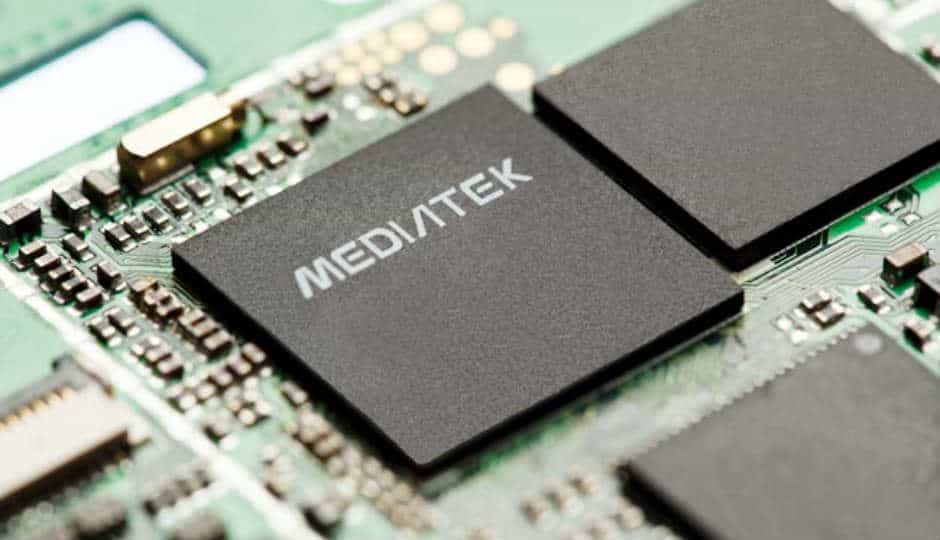
The old series of MediaTek chipsets can be recognized by their naming. This line of chipsets typically begins with "MT," followed by a sequence of four numbers. Some notable models from this series include the MediaTek MT6753, MediaTek MT6752, and MediaTek MT6750.
These chipsets, dominant during their time, were considered mid-range. For instance, the MediaTek MT6752 powered devices such as the Lenovo Vibe S1 from 2015 and the Vivo V5 from 2016.
These mid-range chipsets had impressive features for their era, such as an octa-core CPU, 4G CAT6 connectivity, and Pump Express fast charging technology, setting them apart in their category.
Additionally, the old series includes models geared towards the entry-level segment, characterized by quad-core CPUs but still supporting 4G connectivity. Examples include the MediaTek MT6737 and MediaTek MT6735, which were popular among local mobile phone manufacturers like Evercoss.
Despite their affordability, MediaTek chipsets often deliver robust performance. Some models have even led the pack in various synthetic benchmark tests, demonstrating that a lower price point does not necessarily mean compromised capabilities. For more information on the highest-performing MediaTek chipsets, please refer to the detailed list that follows.
List of Best MediaTek Chipsets
After exploring the various types of MediaTek chipsets, let’s have a look at the hierarchy of the best MediaTek chipsets. The ranking below is based on the level of capabilities and features each chipset offers.
1. Dimensity 9300

Released in November 2023, the Dimensity 9300 boasts a bold CPU configuration with eight CPU cores that forego an efficiency core. The setup includes four Cortex-X4 prime cores clocked at 3.25 GHz and four Cortex-A720 performance cores at 2.0 GHz.
This chipset integrates several crucial components such as the Immortalis-G720 MC12 GPU (1.3 GHz), MediaTek APU 790 AI processor, Imagiq 990 ISP, a 5G modem, and MediaTek MiraVision 990 display driver, all manufactured using a 4 nm process by TSMC.
Additional features like ray tracing support and an AVI codec accelerator are included, suggesting that MediaTek is aiming not only to surpass the Dimensity 9200 but also to compete with Qualcomm's flagship Snapdragon 8 Gen 3.
However, the lack of an efficiency core might lead to potential throttling issues. According to a CPU Throttling test by GSM Arena, the Dimensity 9300's performance only dropped to 73% of its peak capability on a vivo X100 Pro, which also speaks to the device’s effective thermal management system.
Other benchmarks from GSM Arena highlight the chipset’s superior performance with a GeekBench 6 single-core score of 2192 and a multi-core score of 7343, while its AnTuTu 10 score reached 2,104,997.
MediaTek claims that the Dimensity 9300 saw a 40% increase in CPU multi-core performance and a 33% boost in efficiency, with GPU capabilities improving by 46% and a 40% increase in efficiency.
2. Dimensity 9200 and 9200+
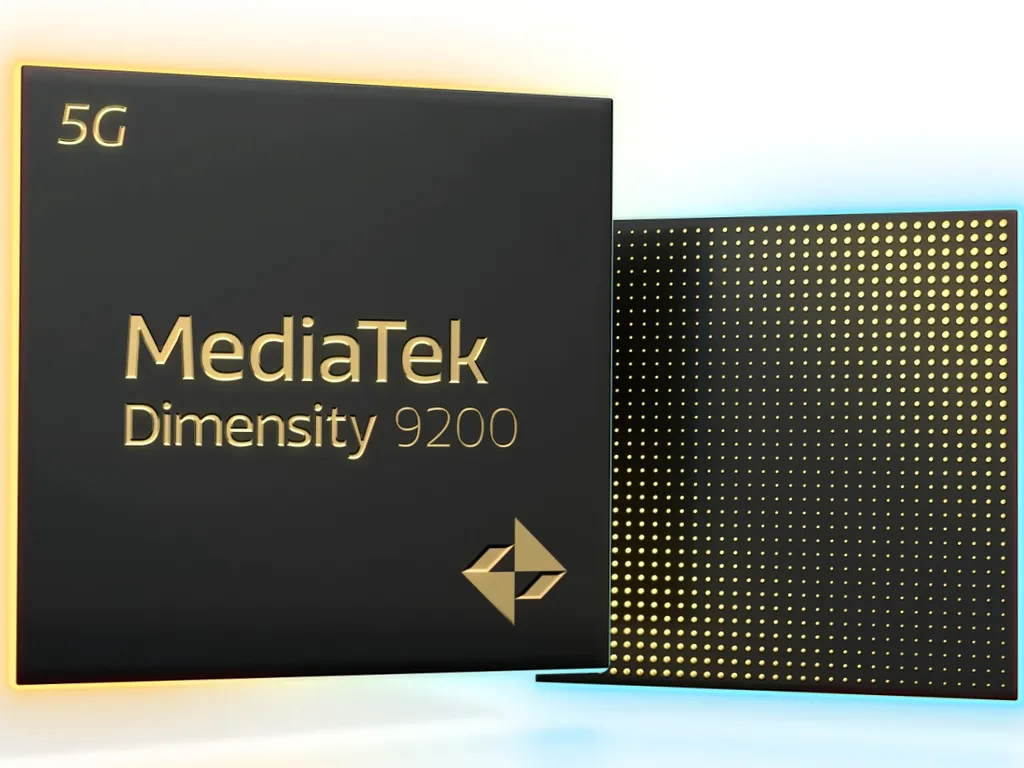
The Dimensity 9200, rivaling Snapdragon 8 Gen 2, introduces several innovations aimed at enhancing the gaming experience.
This includes hardware acceleration for ray tracing—a graphics technology in gaming that produces highly realistic light reflections, traditionally seen in PC graphics cards like the NVIDIA GeForce RTX 3050 and next-gen consoles.
The Immortalis G715 ARM GPU in this chipset reportedly improves performance by 32% over its predecessors while maintaining power efficiency.
The Dimensity 9200 features an ARMv9 architecture with eight processors: a Cortex X3 prime core (3.05 GHz), three ARM Cortex A715 high-performance cores (2.85 GHz), and four Cortex A510 power efficiency units (1.8 GHz).
This chipset supports LPDDR5x RAM, UFS 4.0 internal storage, WiFi 7, 5G, and Bluetooth 5.3, all built on a 4 nm manufacturing process.
In the second quarter of 2023, MediaTek introduced the Dimensity 9200+ as an overclocked version of the Dimensity 9200, with increased CPU and GPU clock speeds. The Cortex X3 prime core in the 9200+ reaches 3.35 GHz, the Cortex A715 high-performance core at 3.0 GHz, and the Cortex A510 efficiency core at 2.0 GHz.
Mobile phones like the Xiaomi 13T Pro and iQOO Neo 8 Pro utilize the Dimensity 9200+. As per Nano Review records quoted on 26 February 2024, the Dimensity 9200+ scored 1,532,398 on AnTuTu 10, with high CPU performance on Geekbench 6, scoring 2103 for single-core and 5568 for multi-core.
3. Dimensity 8300 and 8300 Ultra
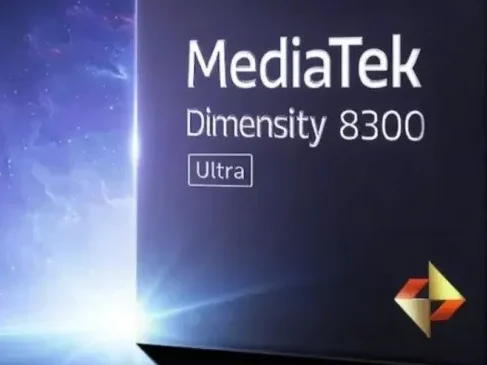
The Dimensity 8300 marks the first chipset in the Dimensity 8300 Series to incorporate generative AI technology, powered by the MediaTek APU 780 AI processor, previously exclusive to the Dimensity 9300.
This generative AI technology enables mobile phones to process AI tasks using the Stable Diffusion model more rapidly. Beyond its AI prowess, the Dimensity 8300 is notable for its impressive computing and graphics processing capabilities.
MediaTek has enhanced the CPU performance of the Dimensity 8300 by 20%, while reducing power consumption by 30%. Additionally, GPU performance has seen a 60% increase with a 55% reduction in power usage.
The chipset includes a CPU with one Cortex A715 prime core (3.35 GHz), three Cortex A715 performance cores (3.2 GHz), and four Cortex A510 efficiency cores (2.2 GHz). It employs a Mali-G615 MP6 GPU clocked at 1.4 GHz. A significant feature of this chipset is the Imagiq 980 ISP, capable of processing video up to 4K 60 FPS resolution.
Notably, MediaTek’s official website does not list the Dimensity Ultra, as it generally bears similar specifications to its counterpart, with the "Ultra" designation indicating modifications.
Xiaomi has received permission from MediaTek to modify the Dimensity 8300, resulting in the Dimensity 8300 Ultra, which powers the POCO X6 Pro 5G. According to tests conducted by GSM Arena, the Dimensity 8300 Ultra achieved an AnTuTu 10 score of up to 1,396,547 points and recorded 1498 points for single-core and 4,696 for multi-core on Geekbench 6.
4. Dimensity 9000

The Dimensity 9000 is crafted by TSMC using a 4 nm fabrication process and features a processor with three clusters: one Cortex X2 core clocked at 3.05 GHz, three Cortex A710 cores at 2.85 GHz, and four Cortex A510 efficiency cores at 1.8 GHz.
The chipset's GPU is a 10-core Mali G710 equipped with HyperEngine 5.0 technology, which uses AI to optimize graphics performance while reducing the GPU load.
For AI processing, the Dimensity 9000 includes a 5th generation Application Processor Unit (APU 5.0), which is touted to be four times more power-efficient than its predecessor, the Dimensity 1200. This high-end processor is known for its superior performance, even outperforming the Snapdragon 8 Gen 1 in synthetic tests.
The Dimensity 9000, which utilizes the newer Armv9 architecture, supports LPDDR5x type RAM with speeds up to 7500 Mbps. Additionally, it features an integrated 5G modem capable of a downlink of up to 7Gbps and supports 3CC Carrier Aggregation (300MHz).
This chipset is used in several high-end phones, including the OPPO Find X5 Pro Dimensity Edition, OnePlus Nord 3, OnePlus 10R, Realme GT Neo 3T, vivo X80, and many others.
5. Dimensity 8200 and 8200 Ultra
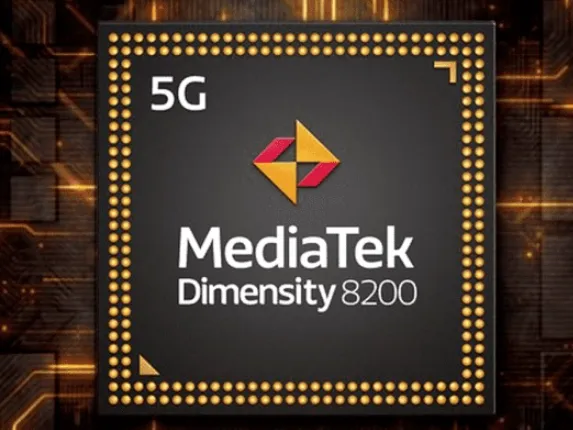
The Dimensity 8200, introduced by MediaTek in the last quarter of 2022, targets the premium mid-range market. This chipset boasts several key features that make it stand out.
It's built using TSMC's advanced 4 nm process, making it highly efficient. One of its standout features is HyperEngine 6.0, which enhances gaming performance by optimizing the chipset's capabilities, allowing for great graphics and efficient power use.
Ray tracing is another exciting feature. It's a technology that makes lighting and shadows in games look more realistic, adding to the immersive experience.
The Dimensity 8200 is equipped with eight CPU cores, six Mali-G610 GPU cores running at 950 MHz, a MediaTek APU 580 AI processor for smart processing tasks, a MediaTek Imagiq 785 image processor, and a MediaTek MiraVision 785 display chip.
Its CPU setup includes one Cortex A78 prime core at 3.1 GHz, three Cortex A78 performance cores at 3 GHz, and four Cortex A55 cores focusing on power efficiency, each running at 2 GHz.
MediaTek also offers a variant called the Dimensity 8200 Ultra, which is essentially the same in terms of specs as the standard model. The "Ultra" label indicates special modifications made to the chipset.
Xiaomi has collaborated with MediaTek to create the Dimensity 8200 Ultra, featured in the Xiaomi 13T. According to GSM Arena, the Dimensity 8200 Ultra achieved an AnTuTu 10 score of 888,714, with a Geekbench 6 score of 1016 for single-core performance and 3901 for multi-core.
6. Dimensity 8100 and 8000
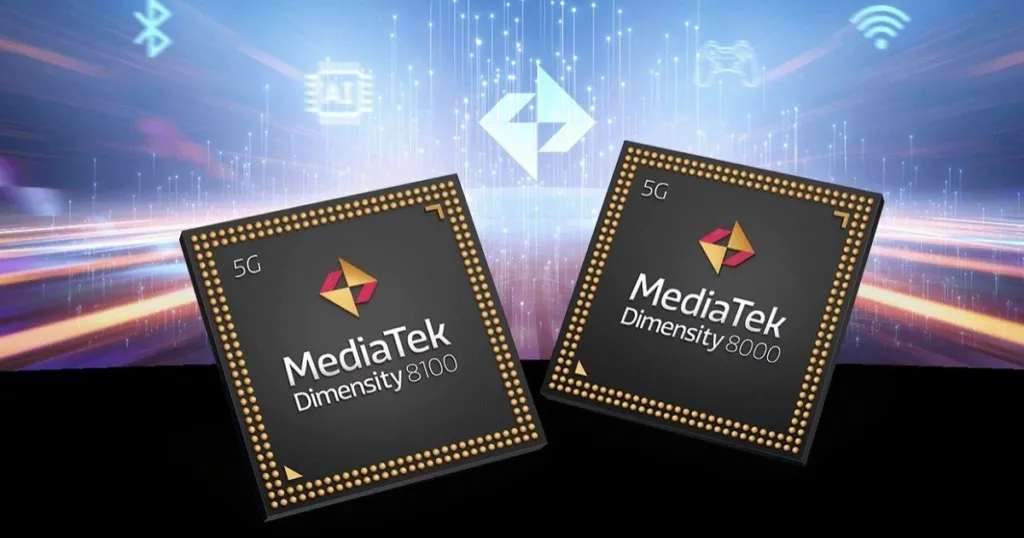
The Dimensity 8100 is a chipset designed to power mid-range to flagship devices with 5G technology. It supports fast 5G networks with download speeds of up to 4.7 Gbps.
The 5G Ultrasave 2.0 technology used in this chipset makes it more power-efficient compared to its predecessor.
This chipset features eight processor cores split into two groups for balance: four Cortex-A78 cores for performance at 2.85 GHz and four Cortex-A55 cores for power saving at 2.75 GHz. It also includes an ARM Mali G-610 MC6 GPU for graphics.
The Dimensity 8100 supports high-definition screens with WQHD Plus resolution at a refresh rate of 120 Hz. It also supports UFS 3.1 type internal storage and LPDDR5 RAM with speeds up to 6,400 Mbps. For camera capabilities, it supports up to 200 MP cameras and can record 4K HDR10+ video at 60 FPS.
It has a "twin brother," the Dimensity 8000, which shares many specifications but differs slightly. The Dimensity 8000 supports screens with a maximum resolution of FHD Plus and a higher refresh rate of 168 Hz. However, its GPU performance is 80% less potent than that of the Dimensity 8100.
7. Dimensity 1200, 1300, and 8050

Introduced in 2021, the Dimensity 1200 chipset was launched alongside the Dimensity 1100, both built using a 6 nm fabrication process. MediaTek claims these chipsets are 22% more powerful and 25% more power-efficient than the earlier Dimensity 1000 series.
The Dimensity 1200 is structured with eight cores divided into three clusters: three 2.6 GHz ARM Cortex-A78 cores for robust performance, one 3 GHz ARM Cortex-A78 core for even faster processing, and four 2 GHz ARM Cortex-A55 cores for efficiency. It includes an ARM Mali-G77 MC9 graphics processor.
Surprisingly, MediaTek claims that this chipset can process photos and videos with better quality than the iPhone 12 lineup. The Dimensity 1200 is featured in devices such as the Redmi K40 Gaming and realme GT Neo Flash, and it's planned for upcoming models like the OPPO Reno6 Pro and realme X7 Max.
In March 2022, MediaTek released the Dimensity 1300, which has identical specifications to the Dimensity 1200. This chipset was rebranded as the Dimensity 8050 in the second quarter of 2023.
The Tecno Phantom V Flip 5G is one of the smartphones equipped with the Dimensity 8050. Testing by GSM Arena showed that the Dimensity 8050 achieved an AnTuTu score of 734,846 and recorded a Geekbench 6 single-core score of 1100 and a multi-core score of 3383.
8. Dimensity 7200
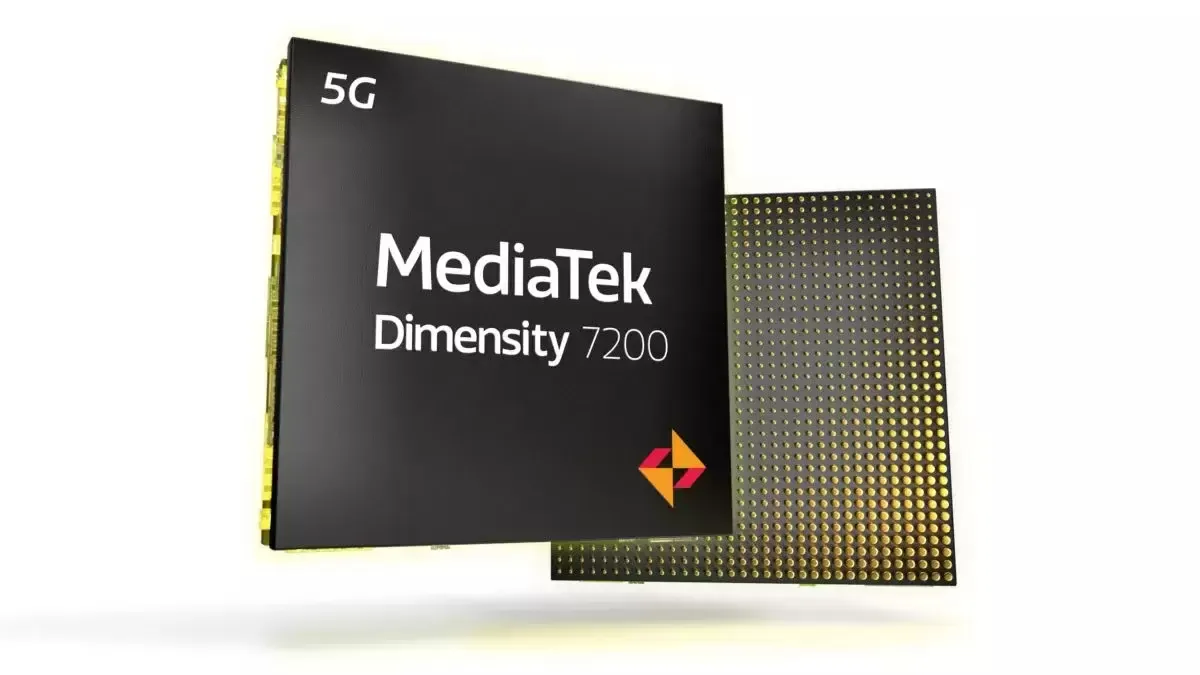
Released in early 2023, the MediaTek Dimensity 7200 is a mid-range chipset known for its efficiency, thanks to TSMC's 4 nm manufacturing process.
It features a CPU with two powerful Cortex A715 cores running at 2.8 GHz and six efficient Cortex A510 cores at 2.0 GHz. The chipset also includes a Mali G610 GPU with four cores clocked at 800 MHz, supports LPDDR5 RAM, and up to UFS 3.1 storage.
Besides the high efficiency power, the Dimensity 7200 is also great at its video capabilities. Equipped with the MediaTek Imagiq 765 image processor, it can handle 4K video recording at 30 FPS with HDR technology.
On The Geeky Monk's YouTube channel, the Dimensity 7200 scored 614,855 points on AnTuTu 9 and achieved 1178 points in single-core and 2638 points in multi-core tests on Geekbench 5.
9. Dimensity 1100
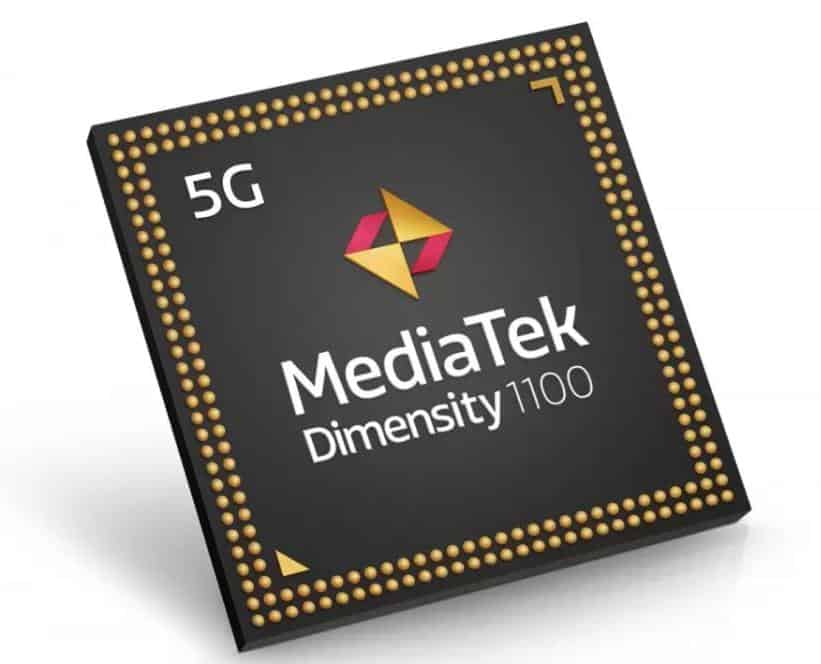
The Dimensity 1100 performs similarly to the Dimensity 1200 but falls slightly behind in benchmark scores. For instance, while the Dimensity 1200 scores around 630,000 on AnTuTu, the Dimensity 1100 scores about 610,000.
The chipset uses two clusters of processors: four Cortex-A78 cores at 2.6GHz for performance and four Cortex A55 cores at 2.0 GHz for efficiency.
However, unlike the Dimensity 1200's three-cluster setup, it has a simpler structure. It also supports displays up to 144 Hz and cameras up to 108 MP. In China, phones like the vivo S9 and realme Q3 Pro use this chipset.
10. Dimensity 1000 Series

The Dimensity 1000 series represents MediaTek's high-end offerings, providing top-notch performance and support for 5G networks, including dual SIM 5G capability.
Built using a 7 nm process, this series is equipped with advanced technologies like HyperEngine 2.0 for gaming, MiraVision for enhanced video and display quality, and support for up to 144 Hz refresh rates. It also features MediaTek Imagiq for 4K HDR video and MediaTek APU 3.0 for AI processing.
There are four variants in the Dimensity 1000 series:
- Dimensity 1000+ and Dimensity 1000 use the Arm Mali-G77 GPU, differing slightly by type.
- Dimensity 1000L is similar but tuned for slightly lower performance.
- Dimensity 1000C uses a less powerful Arm Mali-G57 MC5 GPU.
These chipsets are found in several smartphones, like the Realme X7 Pro and Redmi K30 Ultra with Dimensity 1000+, the OPPO Reno3 5G with Dimensity 1000L, and the LG Velvet T-Mobile with Dimensity 1000C.
Each chipset in MediaTek's lineup is designed not to compete against each other but to fill different market segments. Do you have any of these MediaTek chipsets in your phone?
